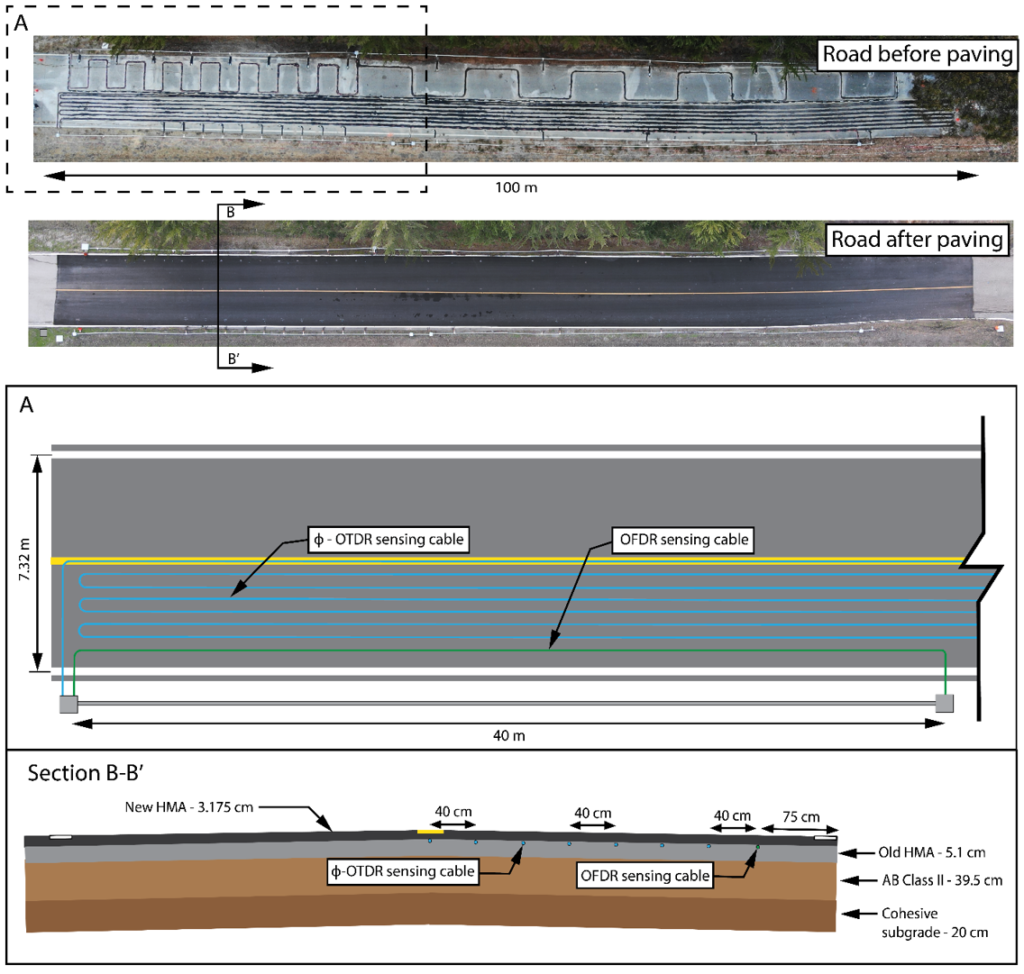Researchers: Peter Hubbard, Ruonan Ou, Kenichi Soga (UC Berkeley), Linqing Luo (LBNL), Hayato Nonaka (Kajima), Martin Karrenbach (Optasense)
Client/Owner: Center for Information Technology Research in the Interest of Society (CITRIS)
Technologies: Distributed Strain and Acoustic Sensing
Publications: P. G. Hubbard et al. “Road Event Detection using Asphalt-embedded Dynamic, Distributed Strain Sensing based on DAS Technology.” (Publication pending)
Phase-coherent Optical Time Domain Reflectometry (φ-OTDR) is known for its long maximum sensing range and high acquisition rate, which are attractive qualities for transportation applications. To evaluate its ability for collecting spatially and temporally continuous information about the events happening on top of the road surface, fiber optic strain sensing cables were installed in the hot mix asphalt pavement of a 100-meter-long roadway at UC Berkeley’s Richmond Field Station. The cables were 5 mm in diameter, steel-reinforced, and tightly buffered fiber optic cables specifically designed for strain sensing. An Optasense ODH-4 interrogator unit was used, which had a maximum sensing range of 10 km, an acquisition rate up to 100 kHz, a bandwidth of 1/8 of the acquisition rate, a minimum gauge length of 2 m, and a readout interval of 1 m. Various subjects (e.g., pickup truck, runner, pedestrian, dog) were tested, where each subject traveled along the roadway while φ-OTDR collected the strain measurements. The measurements were then verified using Optical Frequency Domain Reflectometry (OFDR) and revealed that φ-OTDR could provide spatiotemporal strain signals that identified each event. By demonstrating φ-OTDR as an extremely sensitive dynamic strain monitoring method for hot-mix asphalt pavement, this study concludes that φ-OTDR shows great potential to be incorporated into future Intelligent Transportation Systems (ITSs).
